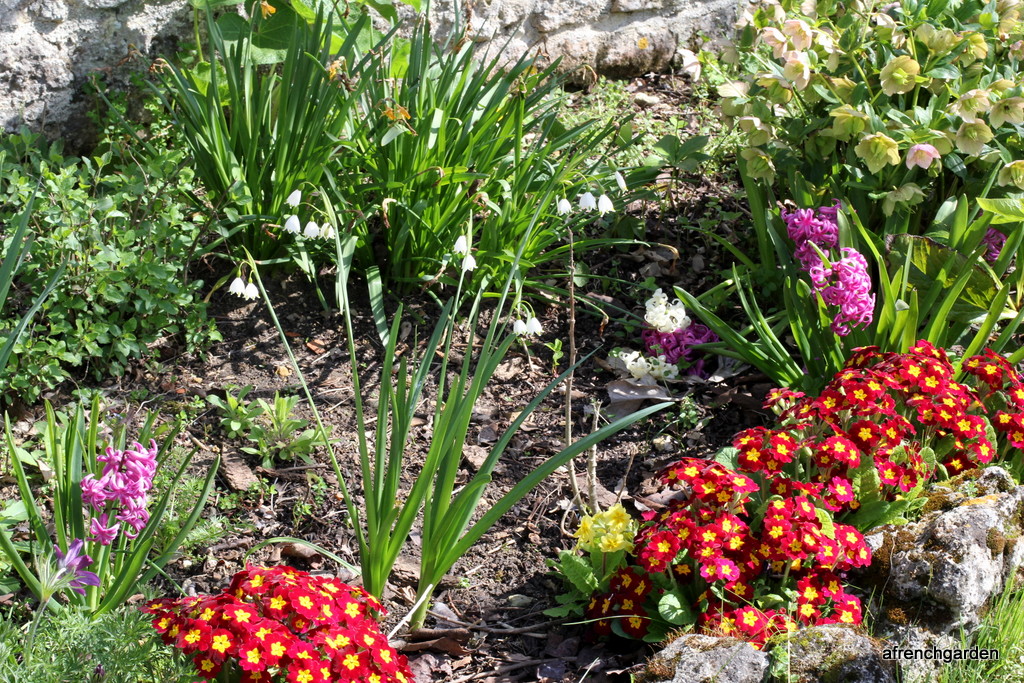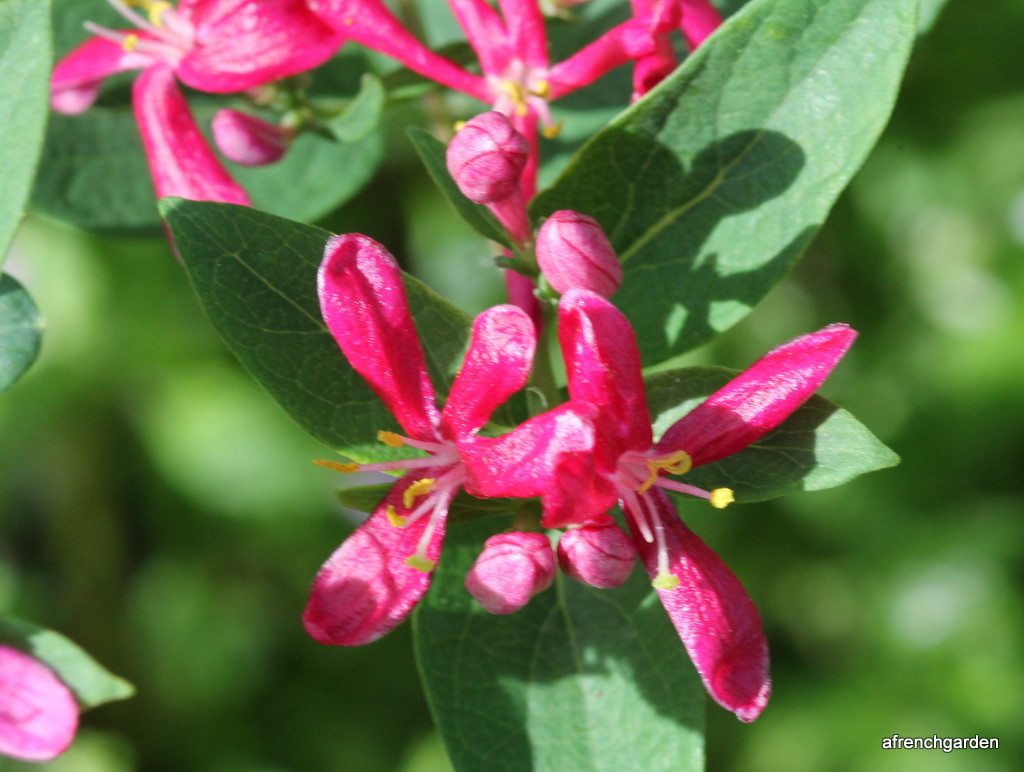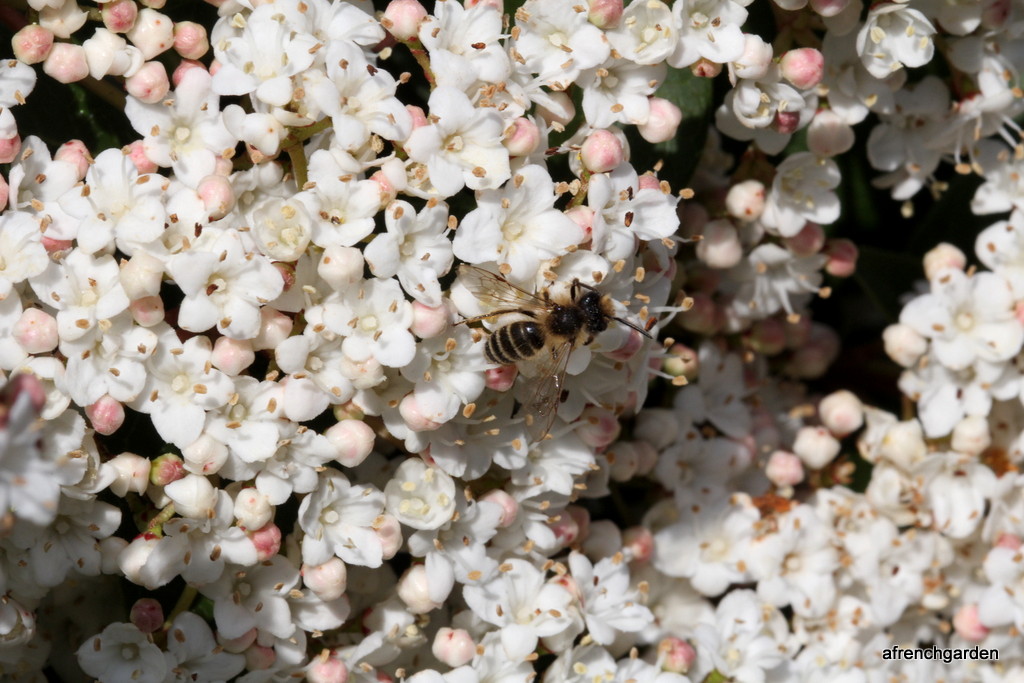
There are more comings at this time of year and it was comforting to see a pair of Hoopoes outside the kitchen window. I always associate them with the summer and we are still definitely in spring with the changeable days, but there are more warm days now.
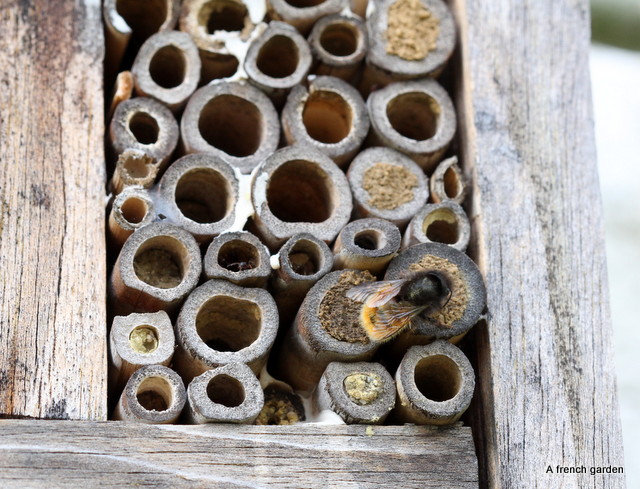
The Osmia cornuta are finishing their life’s work, and as their colour fades I know I will not be seeing them for much longer.

The bees have no more flowers to go to on the “Accolade” flowering cherry, the recent high winds scattered the petals forming a natural confetti around it.

We have a flowering Malus which is now the place to go to see the bees. The Malus is in the foreground of the picture above but it does not do justice to the colours of the little tree.

The buds are a vivid pink and the colour of the flowers lighten into white as they open.

They provide everything the bees are looking for at the moment.

This is a carder bmblebee, the flowers attract all sorts of bees.

I also think the flowers provide a beautiful backdrop for bee photographs and the short height of the plant makes it more convenient for me. I would say this is a male Eucera longicornis, he has elegant long antenna, but I am no expert.
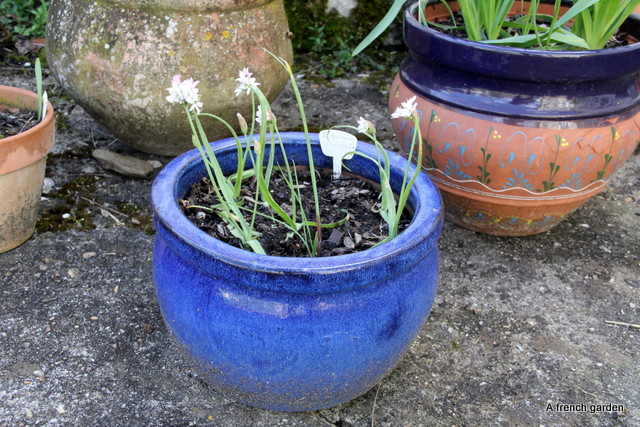
I think I have made a poor choice in the placement of these allium cameleon. I followed the spacing of the bulbs that was suggested but perhaps they were intended to be grown in the ground? Although I think they would get lost in my garden. Perhaps I just have to wait until next year and they will thicken up? Any ideas?

My Lonicera tatarica is in flower at the moment. This is one of my bush honeysuckles that I bought for the bees but it does not attract the bees like my Malus. However, it provides loads of colour, is drought tolerant and I have been able to grow several more from cuttings.
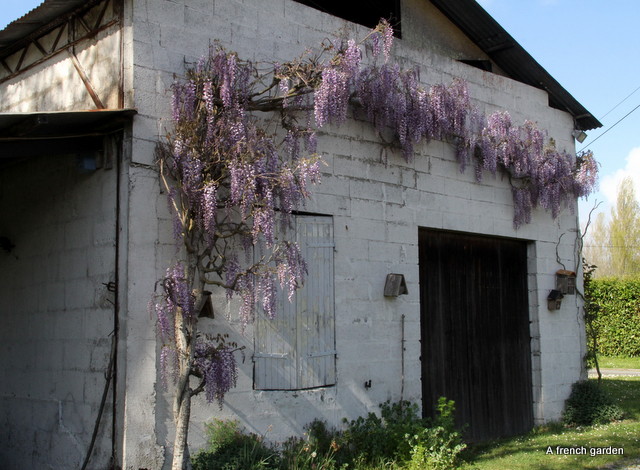
My Wisteria is coming into flower. The plant against the outbuilding is sheltered and is always the first to flower.

The first swarm arrived on the 11 April. It decided to settle on the top of the Loquat (Eriobotrya japonica) tree. We have never had a swarm settle there and we hope to cut down the top branches to dissuade others to do the same. I was happy to let it fly but Kourosh insisted on climbing up to secure it.
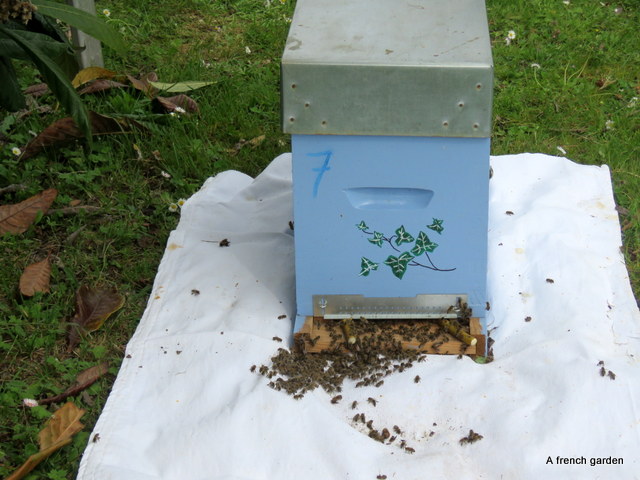
All went well and they are installed at the bottom of the garden.










